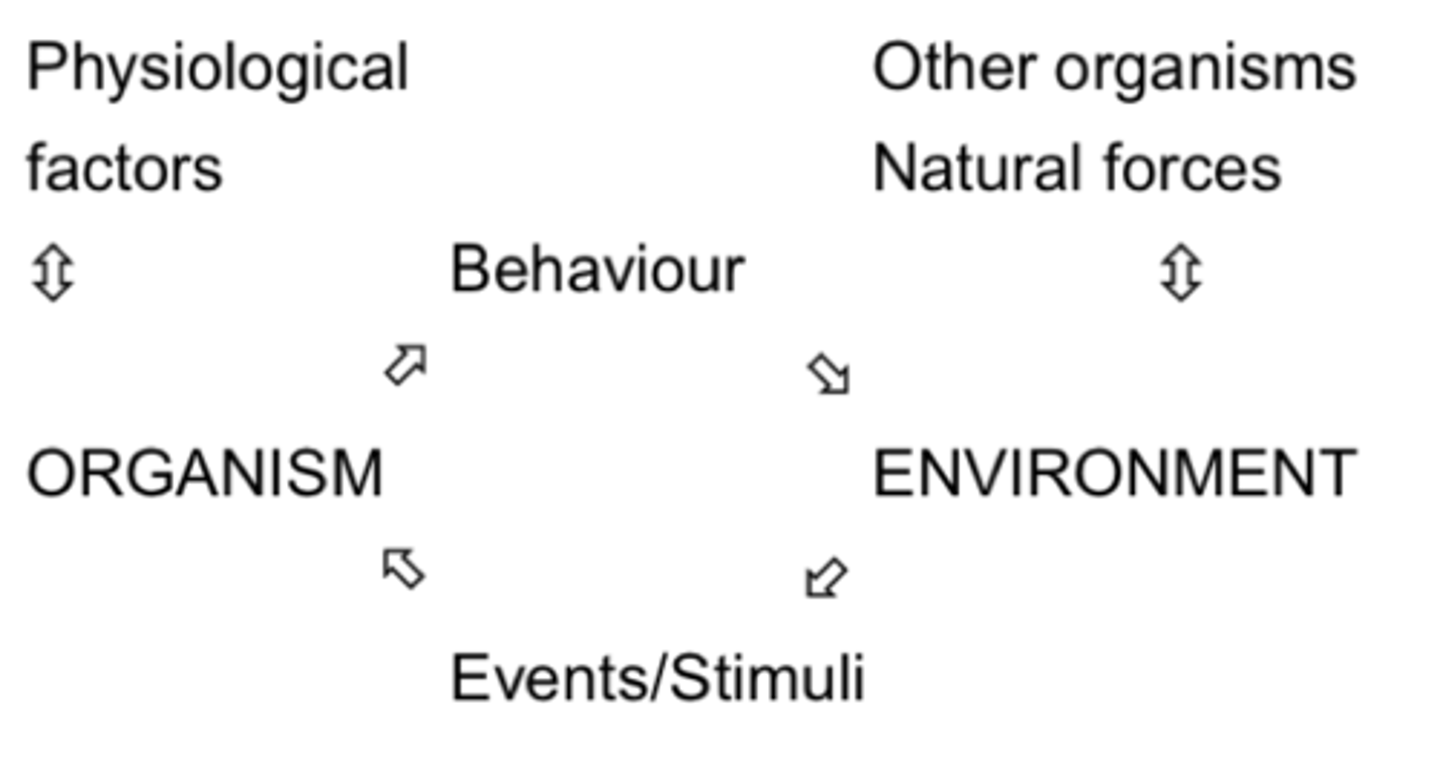Classical Learning
1/44
There's no tags or description
Looks like no tags are added yet.
Name | Mastery | Learn | Test | Matching | Spaced |
|---|
No study sessions yet.
45 Terms
The organism -environment system

Reflexive behaviours
eye-blinking, suckling and gripping in new borns
Instinctual Behaviours
Imprinting, homing behaviours
Learning
a relatively permanent change in an organism's behavior due to experience
Habituation
the decline in the tendency to respond to an event that has become familiar through repeated exposure
classical conditioning
a type of learning in which one learns to link two or more stimuli and anticipate events
Ivan Pavlov (1849-1936)
Performed pioneering conditioning experiments on dogs. These experiments led to the development of the classical conditioning model of learning.
Neutral stimulus (NS)
a stimulus that elicits no response before conditioning
Unconditioned stimulus (US)
a stimulus that elicits a response, such as a reflex, without any prior learning
conditioned stimulus (CS)
a stimulus that elicits a response only after learning has taken place
Unconditioned response (UR)
In classical conditioning, the unlearned, naturally occurring response to the unconditioned stimulus (US), such as salivation when food is in the mouth.
Conditioned response (CR)
a learned response to a previously neutral stimulus
Human classical conditioning
even humans develop classically conditioned nausea
Conditioned emotional responses
consist of emotional and physiological responses that develop to a specific object or situation
Conditioned Fear Response
A pattern of behavior where a fearful stimulus becomes associated with a previously neutral stimulus, resulting in fear responses to that once neutral stimulus
advertising
the association of certain language to advertising to create a certain response.
Fetishes
heightened sexual arousal in the presence of certain intimate objects.
Relation between the UR and the CR
- Pavlov believed that the CS came to elicit the CR by a process of stimulus substitution; i.e., the CS was equivalent to the US.
- However, while UR and CR are often very similar, they are not necessarily identical.
Compensatory -reaction hypothesis
UR and CR can be opposites, UR a way of preparing for CR (e.g. insulin injection)
Involved in drug tolerance
Opiates - produce pain relief, euphoria and relaxation. After repeated injections, stimuli surrounding drug injections produce a compensatory reaction = depression restlessness, increase pain sensitivity.
Involved in drug overdose
the compensatory reaction requires CS's to elicit the physiological "preparedness" for the drug.
Major Phenomena of Classical Conditioning
acquisition, extinction, spontaneous recovery, generalization, discrimination
CS-US temporal relations
The timing of the CS and US can be important
Delayed (forward) conditioning
CS comes immediately before (and overlaps) with US.
Trace (forward) conditioning
The CS starts and finishes before the US
Simultaneous conditioning
The CS and US start and end together
Backward conditioning
a procedure in which the CS is presented shortly after the US on each trial
Contingency
a simple continuity between the US and the CS is not sufficient for conditioning yto occur.
extinction
the diminishing of a conditioned response; occurs in classical conditioning when an unconditioned stimulus (US) does not follow a conditioned stimulus (CS); occurs in operant conditioning when a response is no longer reinforced.
Spontaneous recovery
the reappearance, after a pause, of an extinguished conditioned response
BTA - Flooding
fear elicited by a CS (certain phobias) is eliminated by process of extinction (too stressful for patients in therapy)
BTA - Stimulus Generalisation
A conditioned response formed to one conditioned stimulus will occur to other similar stimulus.
BTA - Stimulus Discrimination
Occurs when an organism does not respond to stimuli that are similar to the stimulus used in training.
BTA - Generalisation gradients
Continuous stimulus dimensions can produce generalisation gradients. Stimuli close to the CS, produce greater CS e.g wavelength of colour
BTA - Discrimination training
Stimulus A is associated with the US, and Stimulus B is not. If the subject discriminates, the CR occurs only with A.
BTA - Systemic desensitisation
combines ideas from extinction, stimulus generalisation and counter-conditioning. Treatment for phobias and anxiety problems. - confront with picture, encourage the response to decrease, strength of fear response decreases.
Blocking
classical conditioning does not occur if a good predictor of the US already exists.
Higher-order conditioning
once a stimulus has become an effective CS for a certain CR, then that stimulus can be used to condition otehr stimuli.
Sensory preconditioning
learning occurs in the absence of UR. Classical conditioning reveals the association already learnt between two events. CS-US pairings were not necessary for conditioning. Organisms can make more general associations between stimuli S-S learning).
Biological Constraints
Limitations on learning that result from biological factors rather than from experience.
Taste aversion learning
A biological tendency in which an organism learns, after a single experience, to avoid a food with a certain taste, if eating it is followed by illness.
Theoretical implications
- US-CS connections are not arbitrary, depends on biological constraints or predispositions.
- conditioned taste aversions can occur after quite long delays between the CS and the UR.
Applied issues
The hungry coyotes (Gustavson et al., 1976). Treated rabbits and sheep meat, attacks on live rabbits and sheep greatly reduced.
Chemotherapy
often produces severe nausea and vomiting in patients, loss of wieght is not conducive to recovery from the cancer- individual is already sick enough. Is some of the loss of appetite (and weight) due to learned taste-aversions?
Berstein (1978)
Testing taste-aversion for cancer patients, given choice of ice cream before chemo, ice cream and no chemo, no ice cream and chemo. concluded, more patients chose ice cream if they hadn't had chemo or if they had chemo and no icecream.